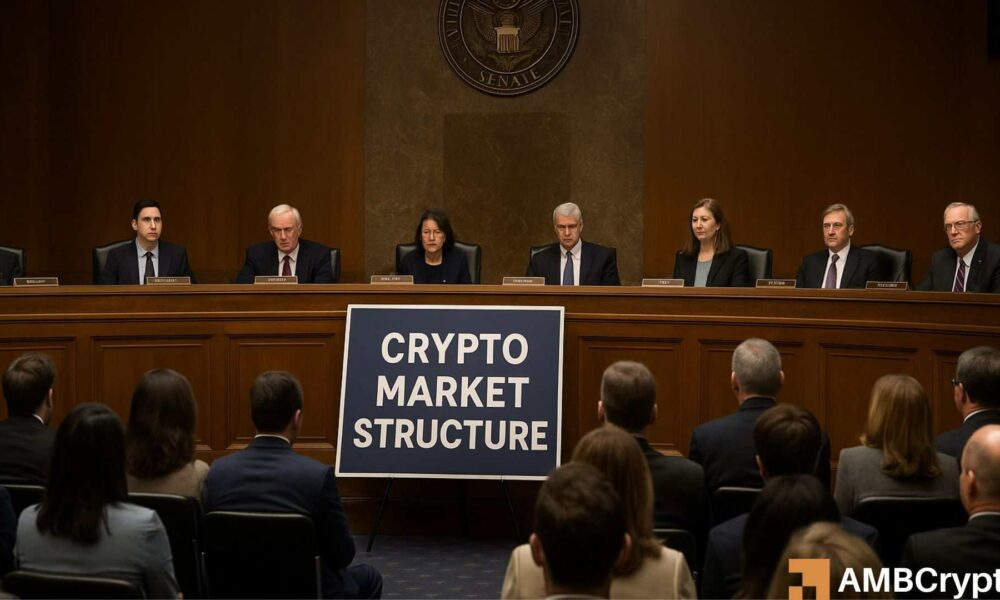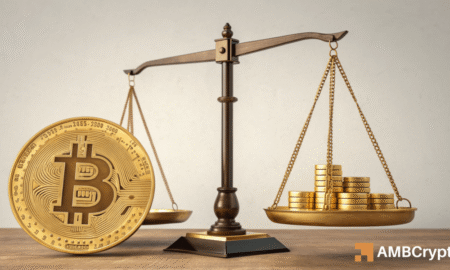Understanding the U.S. Crypto Market Structure Bill: A Journey Ahead
The ongoing discourse regarding the proposed crypto market structure bill in the U.S. highlights the complexities within the legislative process. The Senate’s divergent path from the House-passed CLARITY Act suggests that any consensus may still be a long way off. As legislators navigate differing ideals, the timing of potential passage remains uncertain, with the government eyeing a deadline of September.
Recent Developments in Crypto Legislation
Recent updates indicate that the road to a cohesive crypto regulatory framework is proving to be longer than anticipated. According to experts, including Jake Chervinsky, legal chief of the crypto-focused Variant Fund, the Senate has significantly diverged from the House’s vision embodied in the CLARITY Act. Unlike the smooth passage the GENIUS Act experienced in the House, this bill is unlikely to reach the Senate with the same ease. With the Senate’s own ideas emerging, the anticipated timeline for passing a comprehensive framework may need reevaluation.
Key Differences Between the Senate and House Proposals
On July 22, 2023, the U.S. Senate Committee on Banking, Housing, and Urban Affairs unveiled a draft proposal that indicates notable differences from the existing CLARITY Act. While both aim to regulate digital assets, the Senate’s version introduces a new category of "ancillary" tokens, allowing issuers the ability to self-certify. This change suggests a shift toward accommodating a broader range of digital assets, reflecting the evolving landscape of cryptocurrencies.
Additionally, the Senate draft expands the authority of the Securities and Exchange Commission (SEC), contrasting sharply with the CLARITY Act that seeks to prioritize the Commodity Futures Trading Commission (CFTC). The Senate’s emphasis on regulatory oversight significantly alters the regulatory balance, raising concerns about the potential impact on fundraising activities, which are limited to $75 million through Initial Coin Offerings (ICOs) under the new proposal.
The Role of Blockchain Security Firms
Blockchain security firms such as TRM Labs have underscored the critical distinctions between the Senate and House proposals. They point out that the Senate draft places greater emphasis on tougher anti-money laundering (AML) measures and encourages public-private partnerships. These additions could ensure more robust monitoring of cryptocurrency activities, potentially strengthening investor protection and curtailing illicit activities in the sector.
The next logical step for the Senate will be to gather feedback from stakeholders and industry experts, which may shape the final draft. However, industry observers believe that discussions and hearings could stretch into the fall, further prolonging the legislative process.
Looking Ahead: The Path of Reconciliation
As the Senate prepares to organize stakeholder feedback, these discussions will be crucial in refining the future direction of the bill. Should the proposal move forward, lawmakers will face the considerable task of reconciling the Senate’s draft with the House’s CLARITY Act, a process that could involve considerable negotiation and adjustment.
Notably, the Senate Committee on Agriculture is expected to release its discussion draft in September, which could play a pivotal role in shaping the final regulatory framework. These discussions are critical not only for establishing a cohesive policy but also for future market stability and investor confidence in the U.S. crypto landscape.
The Timeframe and Expectations
The White House anticipates that the crypto market structure bill will reach completion and be submitted for the President’s review by the end of September. However, given the current disparities between the two legislative bodies, achieving this goal may prove challenging. Stakeholders and industry players will be watching closely to see if policymakers can bridge the gap and establish a unified stance towards regulating digital assets.
In conclusion, the evolving dialogue surrounding the U.S. crypto market structure bill presents both challenges and opportunities. As policymakers work through the complexities of the legislative process, the outcome will significantly impact the future of cryptocurrencies in the U.S. As we move closer to the anticipated deadline, the focus will remain on achieving a balanced approach that ensures both innovation and regulation for sustainable growth in the digital asset space.
















